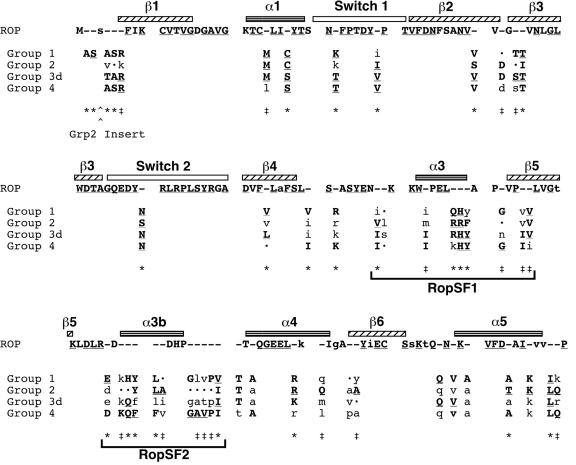Figure 4.
Group consensus amino acid sequences identify conserved regions that differentiate angiosperm Rop groups. Two clusters of group-specific residues are designated RopSF1 and RopSF2. Each position in which at least two groups have a different highly conserved amino acid is marked by *; each position with a given highly conserved amino acid in one or more groups, but less highly conserved residues in other groups is marked by ‡. The secondary structure of human Rac1 (Hirshberg et al., 1997) is shown mapped above corresponding residues in ROP: α-Helices are horizontally striped; β-sheets are diagonally hatched; switch regions (those that change conformation in the GDP-versus GTP-bound protein) are unfilled. The consensus sequences are based on manual inspection of all angiosperm ROP sequences, except the divergent AtROP8 and OsROP5 (74 total). In the ROP family consensus (top line), near identity in the family (at least 95% identity at a position) is capitalized, and highly conserved amino acids (85%-95% identity) are lowercase. Within a Rop group, highly conserved amino acids (at least 85% identity and present in both monocots and dicots) are capitalized. Lowercase letters in the Rop groups indicate an amino acid present in at least one-half of the members and in both monocots and dicots; dots indicate the lack of a predominant amino acid. Complete identity in the ROP family or in a group is marked by an underline. (Note that group 3d contains only dicot sequences.) Number of sequences in each group: group 1, 14; group 2, 9; group 3d, 8; group 4, 43.

